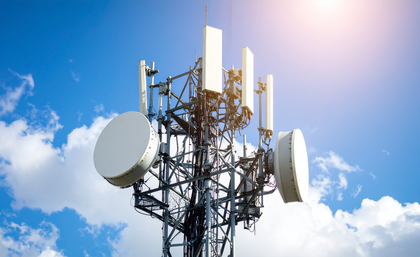TRAI releases recommendations on digital radio broadcast policy for private broadcasters
By IANS | Updated: October 3, 2025 14:40 IST2025-10-03T14:37:24+5:302025-10-03T14:40:09+5:30
New Delhi, Oct 3 The Telecom Regulatory Authority of India (TRAI) on Friday released recommendations for a digital ...

TRAI releases recommendations on digital radio broadcast policy for private broadcasters
New Delhi, Oct 3 The Telecom Regulatory Authority of India (TRAI) on Friday released recommendations for a digital radio broadcast policy for private broadcasters.
The guidelines include terms, conditions, and reserve prices for launching digital radio broadcasting services in four “A+” category cities -- Delhi, Mumbai, Kolkata, and Chennai -- and nine “A” cities: Hyderabad, Bengaluru, Ahmedabad, Surat, Pune, Jaipur, Lucknow, Kanpur, and Nagpur.
The ministry announced that digital radio services will launch in simulcast mode, mandating new broadcasters to adopt the format while allowing existing FM operators to migrate voluntarily. Each assigned frequency will transmit one analogue channel, three digital channels, and one data channel.
Radio broadcasters should commence simulcast operations within two years of the conclusion of the auction process or acceptance of an option for migration, the ministry said
The sunset date for the analog broadcasting should be decided after evaluating the progress of digital radio broadcasting at a later date, it added.
The Ministry of Information and Broadcasting had sought recommendations from TRAI under Section 11 of the TRAI Act, 1997. Further, a consultation paper was released in September 2024, and an open house discussion was conducted in January 2025 prior to finalising its recommendations.
Authorisations will be valid for 15 years, with fees based on adjusted gross revenue, and streaming revenue will be factored into gross revenue calculations, it added.
The TRAI statement said that digital radio broadcasting provides many advantages, including the capability of broadcasting three digital and one data channel, along with one analog channel on a single spot frequency in simulcast mode.
In such a condition, the digital radio channel will provide a superior quality of audio, whereas in the analogue mode, broadcasting of only one channel is possible on the carrier frequency, it added.
In a competitive environment, digital radio broadcasting can provide new opportunities to radio broadcasters as well as multiple listening options and value-added services to the listeners, the release noted.
Disclaimer: This post has been auto-published from an agency feed without any modifications to the text and has not been reviewed by an editor
Open in app